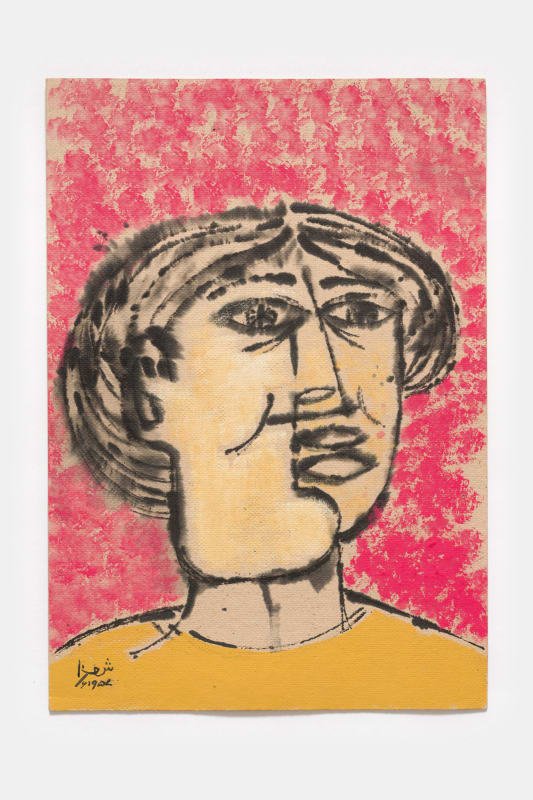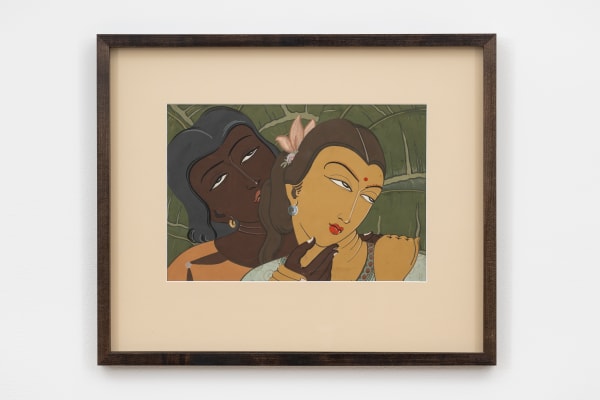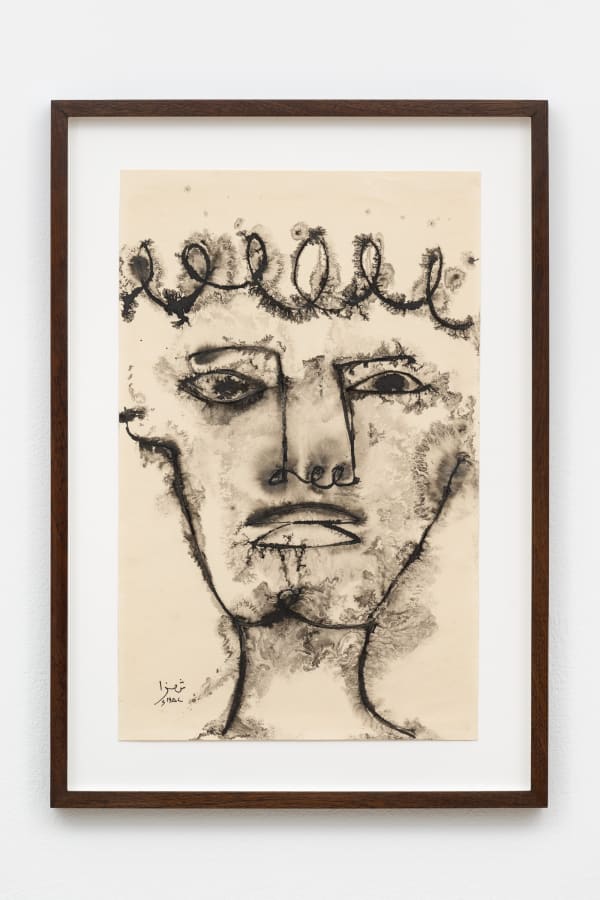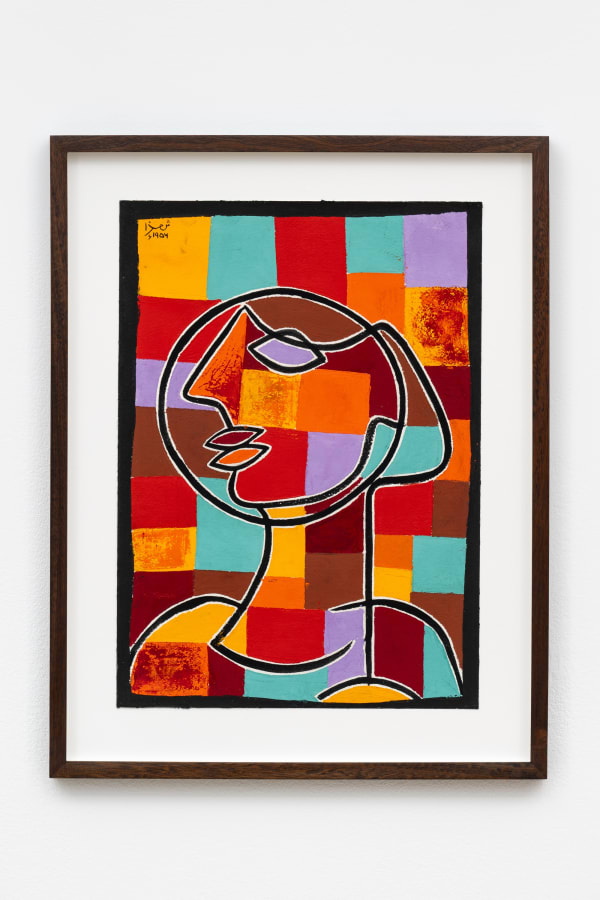Anwar Jalal Shemza: Heads
Hales is delighted to announce Heads, a solo exhibition of historic works by Anwar Jalal Shemza. The show displays Shemza's early portraiture from the 1950s, a key period of experimentation sparked by his arrival in Britain. Never-before-exhibited in the UK, this rare body of work was last shown in 1961 at the Pakistan National Council of the Arts Gallery, Karachi. Heads coincides with Shemza's inclusion in the International Art Exhibition of La Biennale di Venezia, opening 20 April 2024.
Shemza (b. 1928 Simla, India - d. 1985 Stafford, England) was an established artist and writer in Pakistan before moving to England in 1956. An active participant in Urdu literary circles, Shemza published multiple novels and poems; performed radio plays; and edited journals. In 1952, he co-founded the Lahore Art Circle, a group of young artists interested in modernism and abstraction. Moving to England in 1956 marked a significant change to both his life and practice. Studying at the Slade School of Fine Art, Shemza attended a pivotal lecture by famed art historian E.H. Gombrich, who misrepresented Islamic art as purely 'functional.' This statement led Shemza to abandon previous work to embark on a journey to create a dramatically different style and visual language.
Heads marks the beginning of this new direction in London, influenced by the principles of modernism, towards a practice which would look through the double prism of Islamic and European aesthetics. In adapting the human subject, Shemza formally explores colour, surface, geometry and spatial interplays. Using gouache, watercolour and ink he experiments with expressive mark making, repeated blocks of colour, patterned backgrounds, even creating stone like textures. Made in the tradition of European modernist painters, the works are in dialogue with Matisse, Picasso and most importantly Klee. In 1957 Shemza wrote, 'I have been deeply struck by Paul Klee,' and he subsequently visited Bern, Switzerland to study the artist in more depth. [1] This greatly impacted Shemza's practice, renewing his own methods of exploring pattern, colour and line.
The exhibition includes a grouping from Shemza's elegant series of heads made in 1956-1957, as well as an earlier historic piece made in Pakistan, The Couple (1944-1947), which echoes the techniques of miniature painting. Exhibited together, the works show the evolution of his creative practice - the series of heads departs from work made previously in an illustrative style towards an exploration of abstraction. In the decades to come he would forge an exceptional formalist vocabulary, drawn from a range of influences including Mughal architecture, Arabic calligraphy and carpet patterns, of repeated circles and squares for which he is best known. This rarely seen series greatly adds to a richer understanding of the artist's oeuvre.
Anwar Jalal Shemza's work is in many public collections including Metropolitan Museum of Art, New York, USA; Tate, London, UK; Ashmolean Museum, Oxford, UK; Guggenheim, Abu Dhabi, United Arab Emirates, Lahore Museum, Lahore, Pakistan; Sharjah Art Foundation, United Arab Emirates; Minneapolis Institute of Art, MN, USA and many others.
Shortly after his death, Shemza's significant painting The Wall (1958) was selected for inclusion in the seminal exhibition The Other Story: Afro-Asian Artists in Post-War Britain, organised by Rasheed Araeen at the Hayward Gallery in 1989. In 1997, Birmingham Museum and Art Gallery staged a large solo exhibition of his work. His inclusion in exhibitions such as Postwar Modern: New Art in Britain 1945-65 at the Barbican Centre, London (2022); Radical Landscapes at Tate Liverpool (2022); A Century of the Artist's Studio: 1920-2020, Whitechapel Gallery, London (2022); Postwar: Art Between the Pacific and the Atlantic, 1945-1965 at Haus der Kunst, Munich (2016-17); and a display at Tate Britain, London (2015-16) have cemented Shemza's position as a central figure in a post-colonial reappraisal of 20th-century modernism.
[1] Shemza, A. Letter from 20 July 1957, Dadi, I (2015) Anwar Jalal Shemza, London: Ridinghouse, p11


















